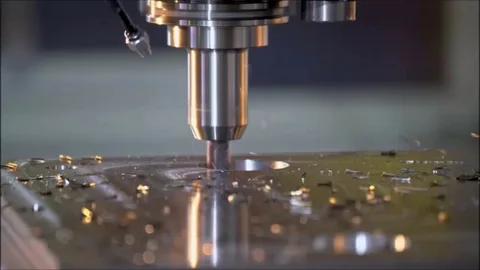The Role of G-Code and M-Code in CNC Programming Explained
CNC programming, short for Computer Numerical Control programming, involves the creation of instructions that guide CNC machines to perform precise machining tasks. These machines, which include mills, lathes, routers, and grinders, rely on specific code languages to function effectively. Among the most vital of these languages are G-code and M-code, which serve as the backbone of every CNC operation. These codes are used to direct tool movement, spindle speeds, coolant flow, and various other machine functions, making them essential for successful CNC machining.
To understand how CNC programming works, it’s important to grasp the workflow behind CNC machines. A programmer first creates a digital design using CAD (Computer-Aided Design) software. This design is then translated into CAM (Computer-Aided Manufacturing) software, which generates the G-code and M-code needed to control the CNC machine. Each code has a specific purpose—G-code handles the geometrical movement of tools, while M-code manages machine functions. Mastery of these codes ensures that parts are machined accurately, efficiently, and safely.
What is G-Code and Why It Matters
G-code, or Geometric Code, is the primary language used in CNC programming to instruct a machine on how to move its tools. Each G-code command begins with the letter “G” followed by a numerical value that represents a specific function. For instance, G00 is used for rapid positioning, while G01 commands linear cutting at a controlled feed rate. These instructions tell the machine where to go, how fast to move, and in what direction—defining the entire path of the tool during machining. Essentially, G-code creates the blueprint for the physical actions a machine must perform.
The importance of G-code in CNC programming cannot be overstated. Without G-code, a CNC machine would have no instructions to follow, rendering it useless. G-code provides the structure for everything from drilling and milling to contouring and threading. It ensures that all movements are executed with precision, which is critical in industries like aerospace, automotive, and medical device manufacturing. By enabling exact tool movements, G-code helps maintain tight tolerances and high-quality finishes, making it an indispensable part of modern CNC programming.
Exploring the Function of M-Code in CNC Machines
While G-code controls the movement of tools, M-code (Miscellaneous Code) is used to control the auxiliary functions of a CNC machine. These include commands like starting or stopping the spindle (e.g., M03 to start clockwise rotation), turning the coolant on or off (e.g., M08 and M09), and changing tools (e.g., M06). M-code commands are typically machine-specific, meaning their functions may vary slightly depending on the manufacturer. Nevertheless, their purpose remains consistent: to manage the non-cutting operations that support the machining process.
M-code is essential in CNC programming because it enables automation of complex processes. Without M-codes, operators would have to manually perform functions like tool changes and coolant management, slowing down the manufacturing process and increasing the chance of human error. By integrating M-code into a CNC program, manufacturers can automate and streamline production, resulting in faster cycle times, better repeatability, and improved safety. M-code works in harmony with G-code, creating a complete and functional set of instructions for CNC machines to follow.
How G-Code and M-Code Work Together
G-code and M-code function together to create a complete CNC program that can guide a machine through an entire machining cycle. While G-code manages the movement of the cutting tools, M-code ensures that all the necessary machine operations are synchronized to support those movements. For example, a typical program may begin with M06 to change the tool, followed by G00 to move the tool rapidly to a start position, then G01 to begin cutting, and M08 to turn on the coolant. These commands are executed in sequence, each playing a vital role in the machining process.
The integration of G-code and M-code ensures that CNC programming is both versatile and efficient. A properly written CNC program coordinates every tool movement and machine function, making the process seamless and predictable. Programmers must understand how to balance G-code and M-code to prevent collisions, avoid errors, and optimize machining time. In essence, while G-code dictates what the machine does spatially, M-code determines how the machine behaves operationally. Their interplay is the foundation of automated, high-precision manufacturing.
Real-World Applications and Industry Impact
In real-world CNC machining environments, G-code and M-code play a pivotal role across multiple industries. In aerospace, CNC programming is used to create highly complex and lightweight components that must meet strict tolerances. Here, G-code ensures precise cuts on materials like titanium and aluminum, while M-code manages spindle speeds and coolant flow for maximum efficiency. In the automotive industry, G-code and M-code help in the mass production of engine parts, transmission systems, and custom molds, enabling high-volume production without sacrificing accuracy.
Even in small-scale operations, the use of G-code and M-code allows machinists and manufacturers to produce high-quality parts consistently. From medical implants and dental devices to furniture components and jewelry, CNC programming powered by these codes enables craftsmen to automate detailed work with minimal manual intervention. As technology advances, the adoption of sophisticated CNC systems continues to grow, with G-code and M-code remaining essential to their functionality. Their role in modern manufacturing underscores their importance in driving productivity, reducing waste, and ensuring the repeatability of high-precision parts.

